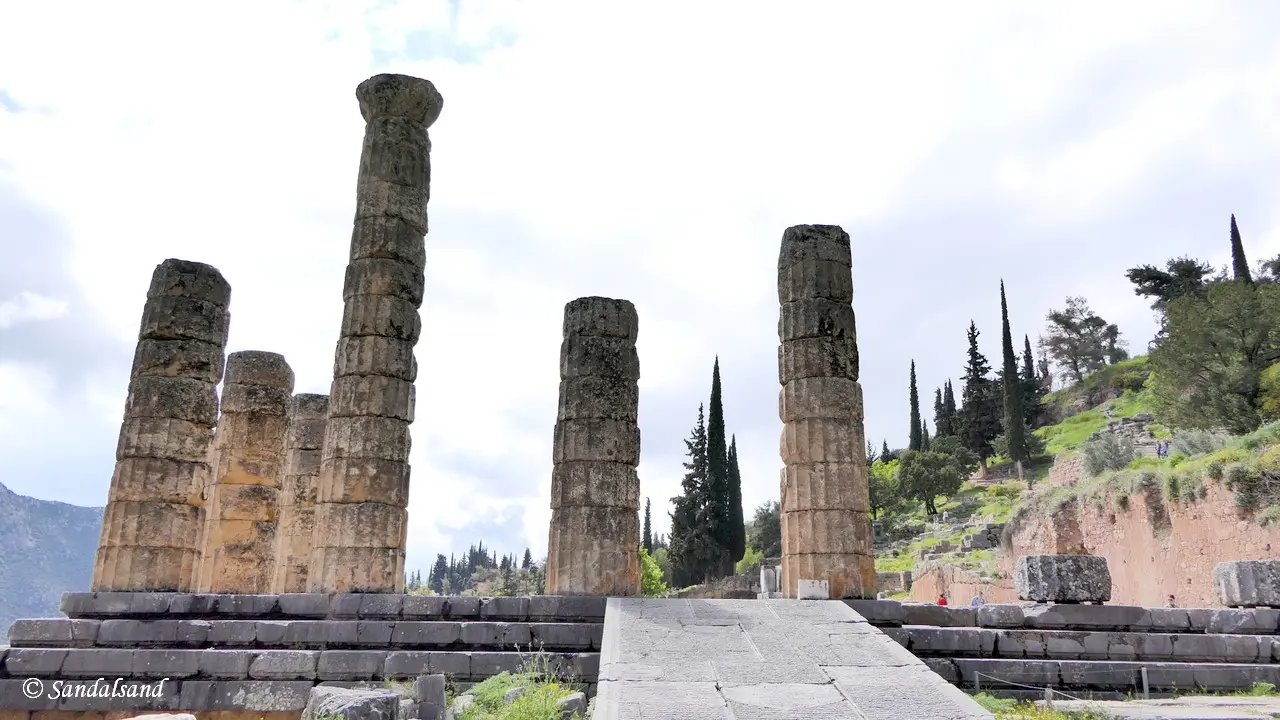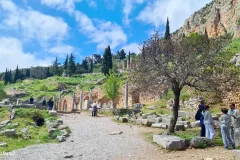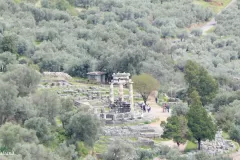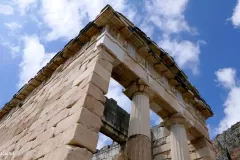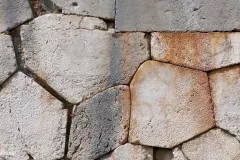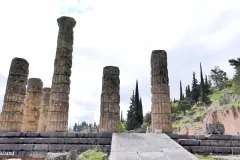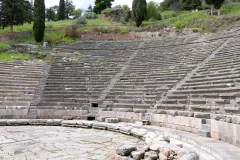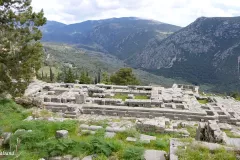Delphi is now an archaeological site. It once hosted the most famous oracle of ancient Greece and was regarded as the centre of the world.
The UNESCO World Heritage List includes over a thousand properties. They have outstanding universal value and are all part of the world’s cultural and natural heritage.
Official facts
- Full name of site: Archaeological Site of Delphi
- Country: Greece
- Date of Inscription: 1987
- Category: Cultural
UNESCO’s World Heritage Centre’s short description of site no. 0393:
The pan-Hellenic sanctuary of Delphi, where the oracle of Apollo spoke, was the site of the omphalos, the ‘navel of the world’. Blending harmoniously with the superb landscape and charged with sacred meaning, Delphi in the 6th century B.C. was indeed the religious centre and symbol of unity of the ancient Greek world.
The development of the sanctuary and oracle began in the 8th century BC, and their religious and political influence over the whole of Greece increased in the 6th century BC. At the same time, their fame and prestige spread throughout the whole of the then known world, from which pilgrims came to the site to receive an oracle from the Pythia, the priestess of Apollo.
A bit more about the site
In Ancient Greece, oracles were immensely popular. Typically, the oracles delivered their revelations in a strange, ambiguous manner that left room for interpretation. They were high priests and priestesses endowed with extraordinary abilities. Their purpose was to deliver the gods’ words to the mortals. Pythia, the Delphic Oracle, was always a woman. People sought her advice before making major decisions such as marriage, war, or establishing new colonies.
It is said that many political decisions were taken after consultation of the Oracle. No colony was founded around the Mediterranean without the consent of the sanctuary at Delphi.
The oldest settlements at Delphi are very old, however most of the ruins we may observe today are from the site’s heydays in the 6th century BC. The Oracle of Delphi was about more than the oracle. There were athletic games, cultural events and festivals. To this end, the sanctuary evolved to include major temple complexes, a theatre, a stadium, and a number of ornate treasuries.
My visit
Sandalsand’s visit was during a road trip to several World Heritage Sites in this part of Greece. The archaeological site consists of several layers, so to speak, spread out on a quite steep mountain slope. At the bottom, below the main road cutting across the area, we find the sanctuary of Athena Pronaia, and the Tholos.
The next level is the very archaeological site with the Apollo temple, a theatre (holding 5,000 spectators), and several treasuries along the “Sacred Way”. The treasuries belonged to city states to hold payments (votive offerings) to the oracle from visitors from these cities. There is a paved pathway connecting the different parts. Over the hill one will find a stadium, with a capacity of 7,000 spectators. There is also a museum with important artefacts from the excavations at Delphi.
Sandalsand concentrated on the central parts of the site, and did not hear any oracle whisper in my ears.

